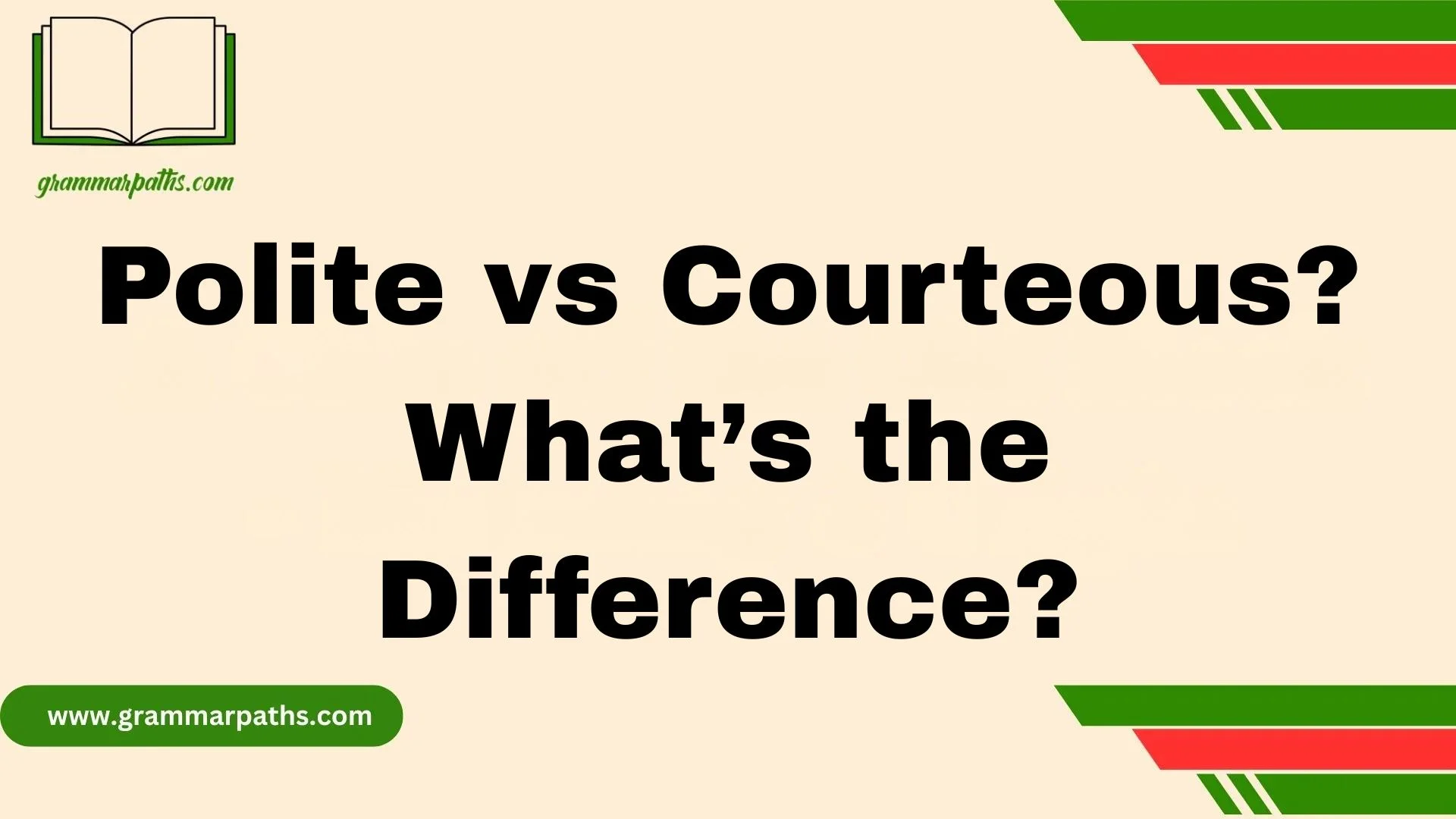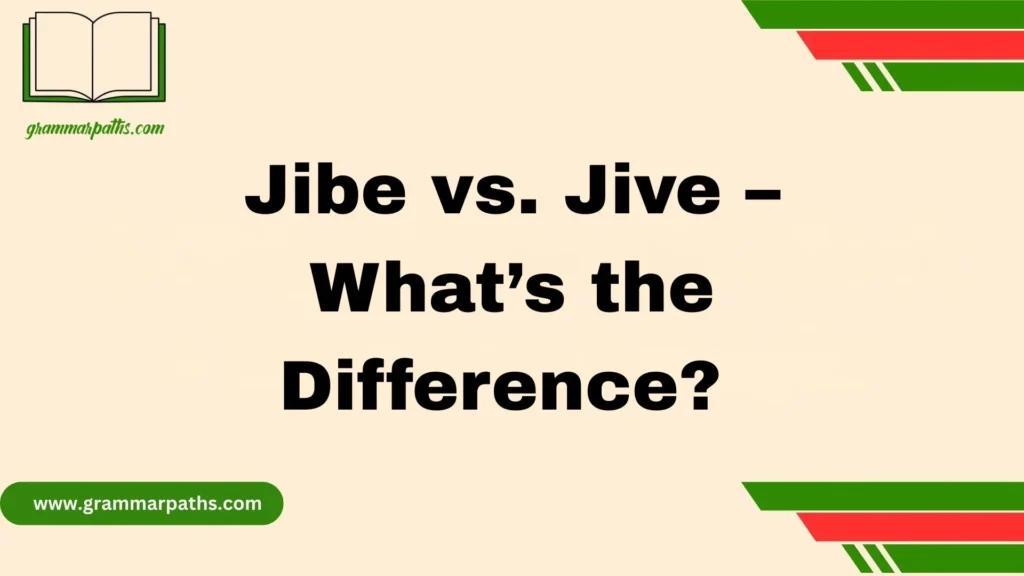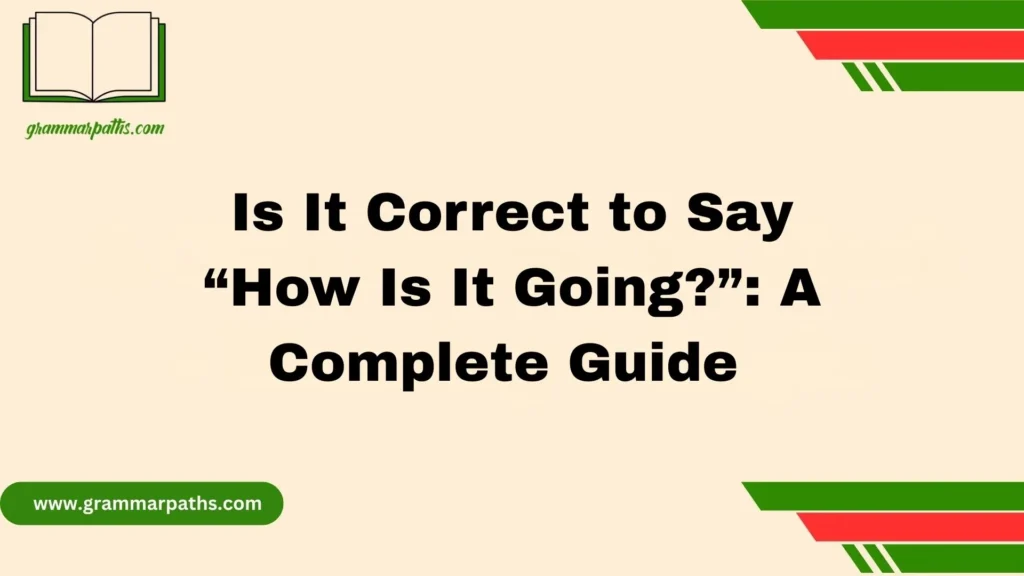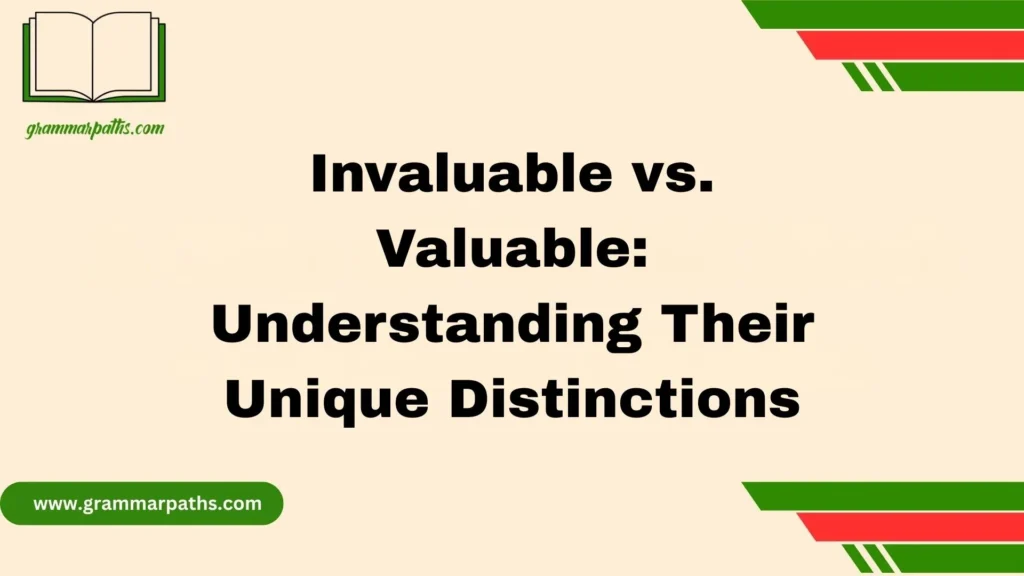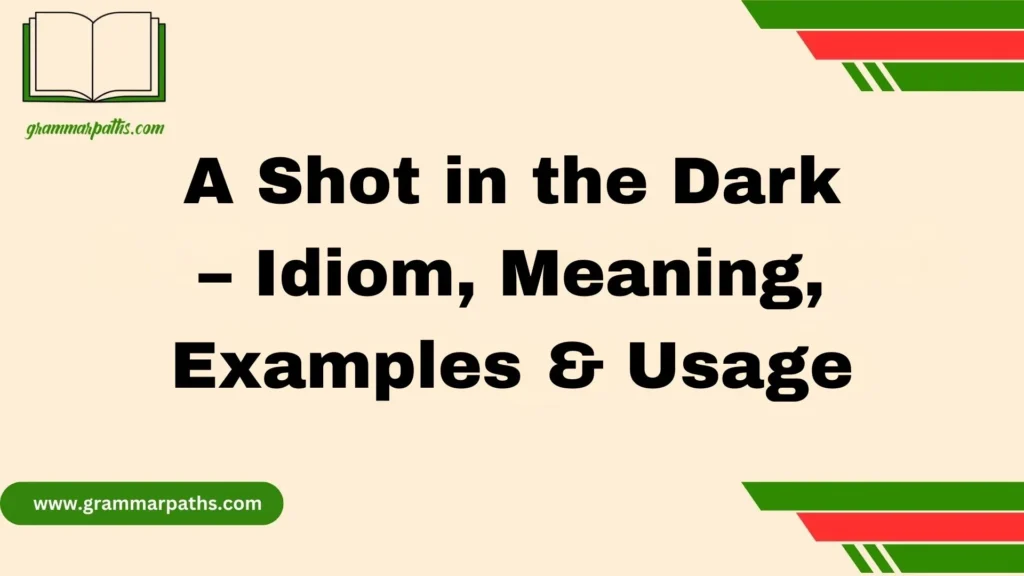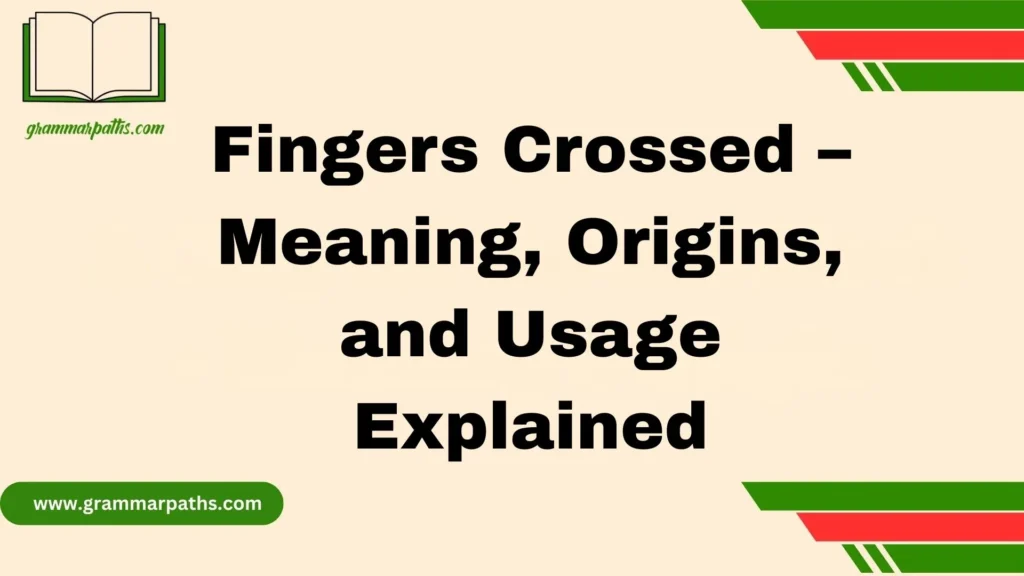From a young age, I was taught the importance of being both polite and courteous, especially in social situations involving people from all walks of life. In my own family, the same values were mentioned again and again—whether among twins or cousins, it was about building strong traits early on. My parents used examples like holding doors open or being considerate in a conversation to show us how small things smooth interactions. I’ve found that in the real world, choosing courtesy over ignoring someone at a crossroads can create a vastly different outcome. Polite vs Courteous? What’s the Difference? It lies in how deep you go—peeling back layers of concepts, knowing the subtle difference between the form and art of talking, and understanding the nuances of how people interact with the world.
Politeness often means following manners, rules, and showing a basic level of respect in everyday actions—saying “please,” “thank you,” or not interrupting. But courtesy goes a step further—it’s about actively thinking of others’ feelings, bringing comfort, and anticipating their needs without having to ask. A simple example is someone carrying heavy items, and without hesitation, you offer a seat or help hold a door. These acts don’t just show you are respectful, they involve deeper thought and reflect how your actions affect others. I’ve learned that being courteous isn’t just about being nice—it’s a decision to lead with empathy in every small interaction.
Polite vs Courteous: Basic Definitions You Need to Know
To understand how polite and courteous differ, we first need to define each clearly.
- Polite generally refers to using words and manners that show respect and consideration for others. It often involves following social etiquette and cultural norms, like saying please, thank you, and excuse me.
- Courteous, on the other hand, goes a step further. It means showing genuine kindness and thoughtfulness through your actions—not just words. Courtesy involves anticipating the needs and feelings of others and acting in ways that make them feel comfortable and respected.
Quick Comparison Table
| Aspect | Polite | Courteous |
| Definition | Using respectful words and manners | Showing thoughtful, considerate actions |
| Focus | Language and etiquette | Behavior and intention |
| Example | Saying “please” and “thank you” | Holding the door open for someone |
| Depth | Surface-level manners | Genuine kindness |
| Motivation | Social expectation | Empathy and respect |
This clear distinction helps explain why you can be polite but not necessarily courteous—and why someone might act courteously without using all the typical polite phrases.
The Psychology Behind Politeness: What Makes Us Say “Please”?
Politeness is often the social glue that keeps daily interactions smooth. Psychologists see it as a behavioral strategy people use to maintain harmony and avoid conflict.
When you say please or thank you, you’re signaling respect and acknowledging the other person’s role in the interaction. This verbal politeness reduces friction and makes people feel valued.
Politeness Functions on Multiple Levels
- Verbal cues: Words and phrases like excuse me, sorry, and may I.
- Non-verbal cues: Smiles, eye contact, and appropriate body language.
- Etiquette rules: Following societal customs, such as table manners or formal greetings.
However, politeness can sometimes feel surface-level or insincere, especially if it’s forced or robotic. That’s why politeness alone doesn’t always build trust or warmth in relationships.
What Makes Someone Courteous? The Power of Thoughtful Actions
Courtesy is less about what you say and more about what you do. It requires awareness of others’ feelings and needs and acting in ways that prioritize their comfort.
For instance, holding the door for a stranger or offering your seat on a crowded bus are acts of courtesy. They reflect genuine kindness and respect beyond mere social obligation.
In the US, courtesy has deep roots in concepts like “Southern hospitality,” where kindness and graciousness are cultural pillars. But courtesy isn’t just a regional thing—it plays a big role in workplaces, schools, and even online communities.
Courtesy in Modern Life
- Offering help without being asked.
- Listening actively without interrupting.
- Respecting personal space.
- Being punctual to show respect for others’ time.
Courtesy helps build stronger bonds and fosters trust because it’s about putting others first in a meaningful way.
Polite vs Courteous – Key Differences You Should Know
Let’s break down the two in detail with a side-by-side comparison to highlight what really sets them apart.
| Feature | Polite | Courteous |
| Primary Tool | Words, phrases | Actions, gestures |
| Depth of Interaction | Often follows social rules | Comes from genuine care and empathy |
| Emotional Impact | Can feel formal or distant | Builds warmth and connection |
| Motivations | Social expectations, avoiding conflict | Desire to help and respect |
| Examples | Saying “please,” “thank you,” or “excuse me” | Holding a door, offering help, listening actively |
| Potential Pitfalls | Can seem insincere or fake | Might be overlooked if subtle |
When Politeness Isn’t Enough
You might say “Excuse me” to get past someone, but if you shove your way through without waiting your turn, you’re polite with words but not courteous in action.
How Politeness and Courtesy Shape Social Norms in the USA
Both politeness and courtesy influence American social life, but they function differently across contexts.
- Casual Settings: Politeness rules can relax. For example, friends may drop formalities but still show courtesy by listening and sharing.
- Formal Settings: Workplaces and formal events often demand polite language, but courtesy distinguishes leaders and team players.
- Regional Variations: The South is known for its blend of politeness and genuine courtesy, often called Southern hospitality—a cultural ideal Americans admire.
The Digital Age Challenge
Online communication has complicated this. Politeness often gets lost in texts or emails, where tone is hard to read, while courtesy requires intentional effort, like responding promptly or avoiding harmful comments.
Real-Life Examples: Polite vs Courteous Actions You Can Recognize
Understanding the difference becomes easier with real examples from everyday life.
| Scenario | Polite Example | Courteous Example |
| At a Restaurant | Saying “please” to the waiter | Smiling and making eye contact when ordering |
| In Traffic | Saying “thank you” after a car lets you merge | Waiting your turn patiently without cutting in line |
| At School or Work | Greeting others formally | Helping a new colleague get settled |
| Online | Using polite language in emails or chats | Responding thoughtfully to questions |
How Mastering Both Politeness and Courtesy Boosts Your Social Skills
When you combine politeness and courtesy, you become someone others trust and respect. You show not just that you know the rules but that you genuinely care.
Emotional intelligence plays a big role here—being able to read social cues and respond with kindness and respect.
Tips to Improve Interpersonal Skills
- Practice active listening—don’t just wait your turn to speak.
- Match your words with kind actions.
- Avoid overusing polite phrases that sound robotic.
- Recognize when a situation calls for courtesy, not just politeness.
- Show appreciation through both words and deeds.
Practical Ways to Be Polite Every Day
If you want to polish your polite skills, start with simple, everyday habits:
- Greet people with a smile and eye contact.
- Use please, thank you, and excuse me naturally.
- Respect personal space and avoid interrupting.
- Apologize sincerely when needed, but avoid over-apologizing.
For Teens and Young Adults
- Be mindful on social media; polite language counts online too.
- Avoid texting in all caps (it sounds like shouting).
- Use polite phrases when asking for favors or help.
How to Express Courtesy — Taking Kindness One Step Further
Courtesy means doing what’s thoughtful before anyone asks. Here’s how you can express it:
- Hold doors open for others.
- Offer your seat on public transport.
- Help carry something heavy without being asked.
- Check in on friends going through tough times.
- Listen fully without interrupting.
Courtesy in the workplace can look like sending thank-you notes, sharing credit, or helping teammates finish tasks.
Cultural Dos and Don’ts in US Courtesy
| Do | Don’t |
| Respect others’ time by being punctual | Show up late without notice |
| Use appropriate greetings for settings | Use slang or informal words in formal contexts |
| Show empathy and patience | Ignore others’ feelings or concerns |
Self-Check: Are You Polite, Courteous, or Both?
Here’s a quick checklist to help you see where you stand:
- Do you say please and thank you regularly?
- Do you hold doors or help others without being asked?
- Do you listen carefully and avoid interrupting?
- Are your polite words backed by kind actions?
- Do you apologize sincerely when wrong?
If you answered yes to most, you’re on the right track!
Conclusion
Growing up, I slowly realized that being polite and courteous is more than just saying please or thank you—it’s about truly understanding how our actions affect others. Whether it’s holding a door, offering help, or anticipating someone’s needs, these small yet powerful acts help us interact better with the world. When we pause at life’s crossroads and choose courtesy, we set ourselves on a path toward stronger connections and a smooth, meaningful daily life.
FAQs
What’s the main difference between being polite and being courteous?
Politeness is about following manners and social rules, while courtesy involves a deeper thoughtfulness and empathy toward others’ feelings.
Can someone be polite but not courteous?
Yes. For example, someone can say “thank you” (polite) but ignore that you’re carrying heavy items and not offer help (courtesy).
Why is it important to teach these traits to young people?
Instilling polite and courteous traits early helps children develop natural respect and comfort in social situations, making their future interactions smooth and meaningful.
Do cultural differences affect politeness and courtesy?
Absolutely. In a multicultural neighborhood, what’s considered polite or courteous may change. Understanding these nuances helps in adapting and building strong social bonds.
How can I practice courtesy every day?
Simple acts like holding doors, offering a seat, or listening attentively when someone speaks are ways to step further into being genuinely courteous.
References and Further Reading
- Merriam-Webster Dictionary: Polite
- Merriam-Webster Dictionary: Courteous
- Brown, P., & Levinson, S. (1987). Politeness: Some Universals in Language Usage. Cambridge University Press.
- Goleman, D. (1995). Emotional Intelligence. Bantam Books.

Grace Marie is the dedicated writer behind GrammarPaths.com, where she shares her passion for English grammar, idioms, and writing mastery. With a strong background in language studies and years of experience helping learners improve their communication skills, Grace creates clear, practical, and engaging content that makes English easy to understand.
